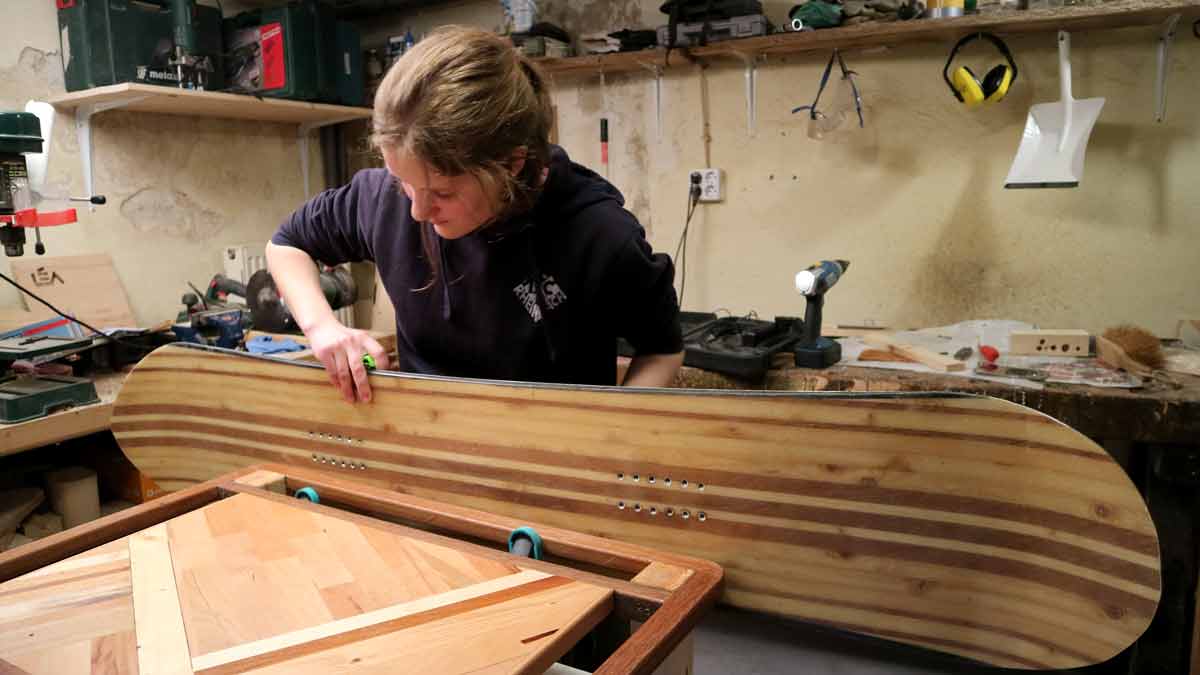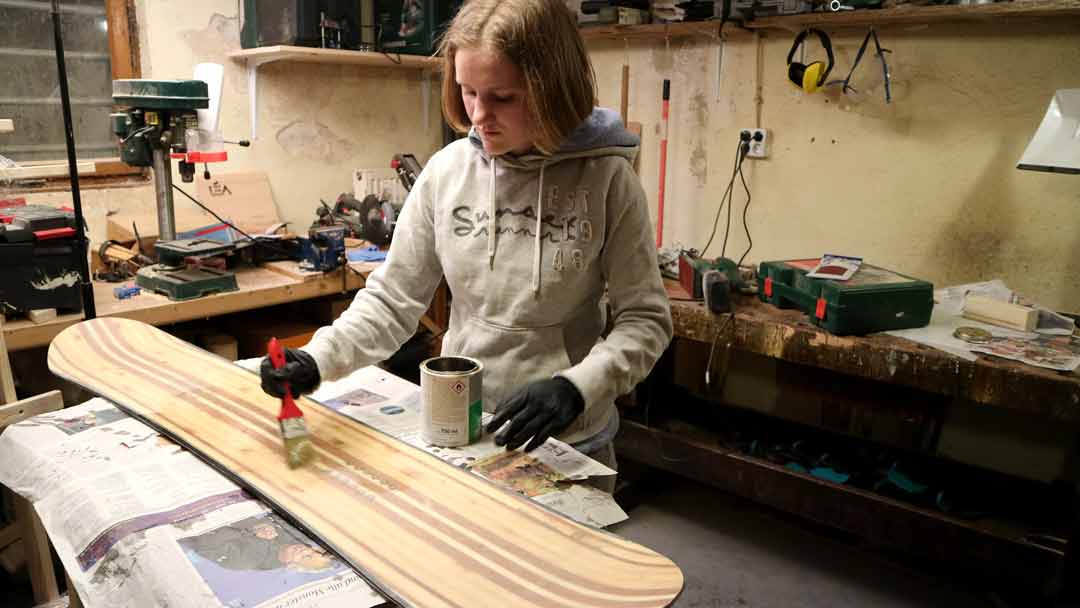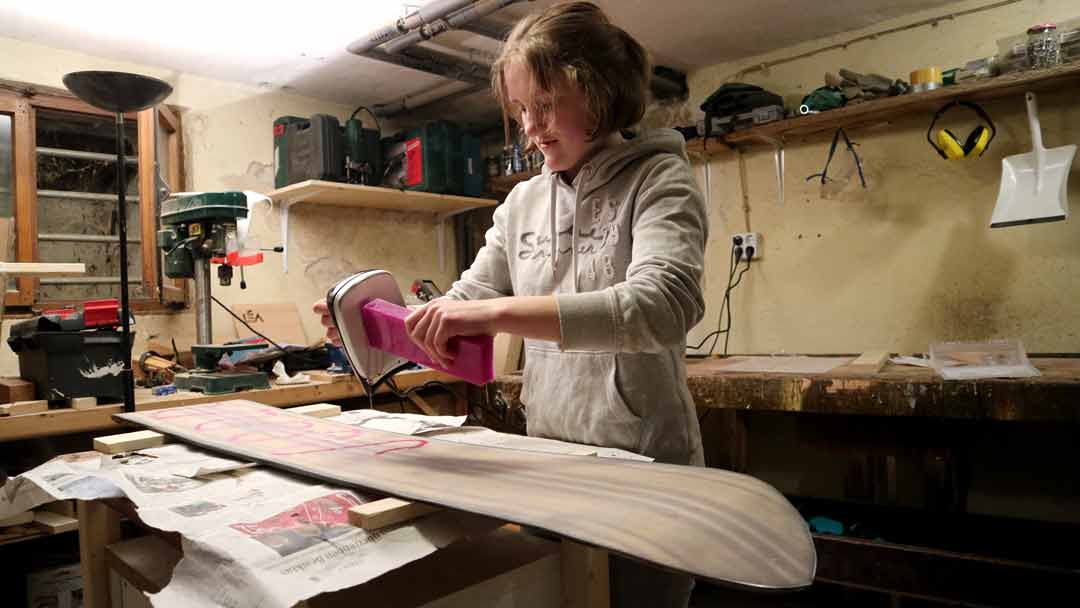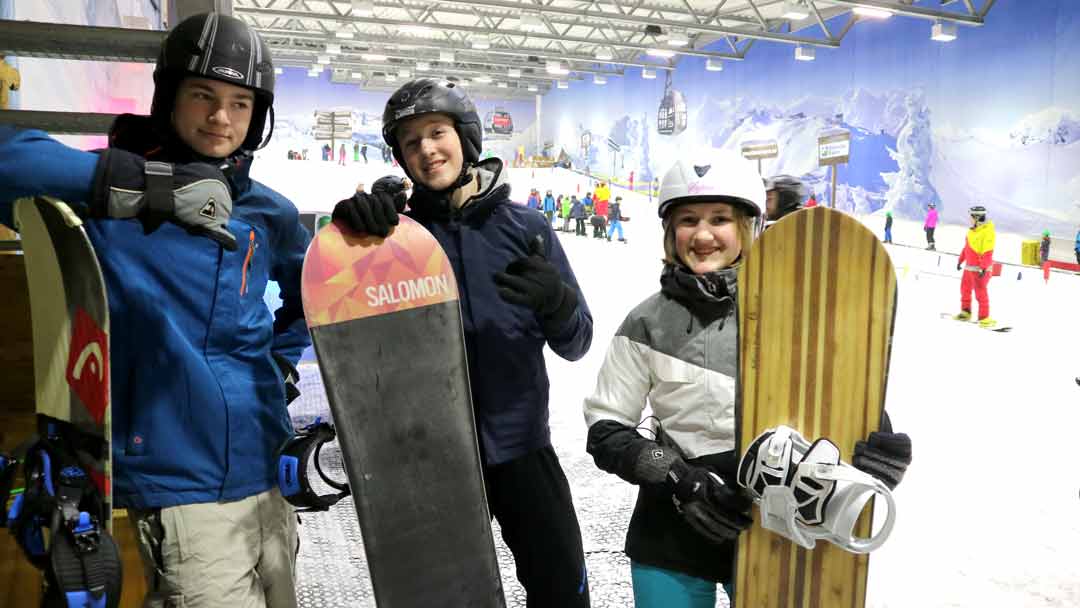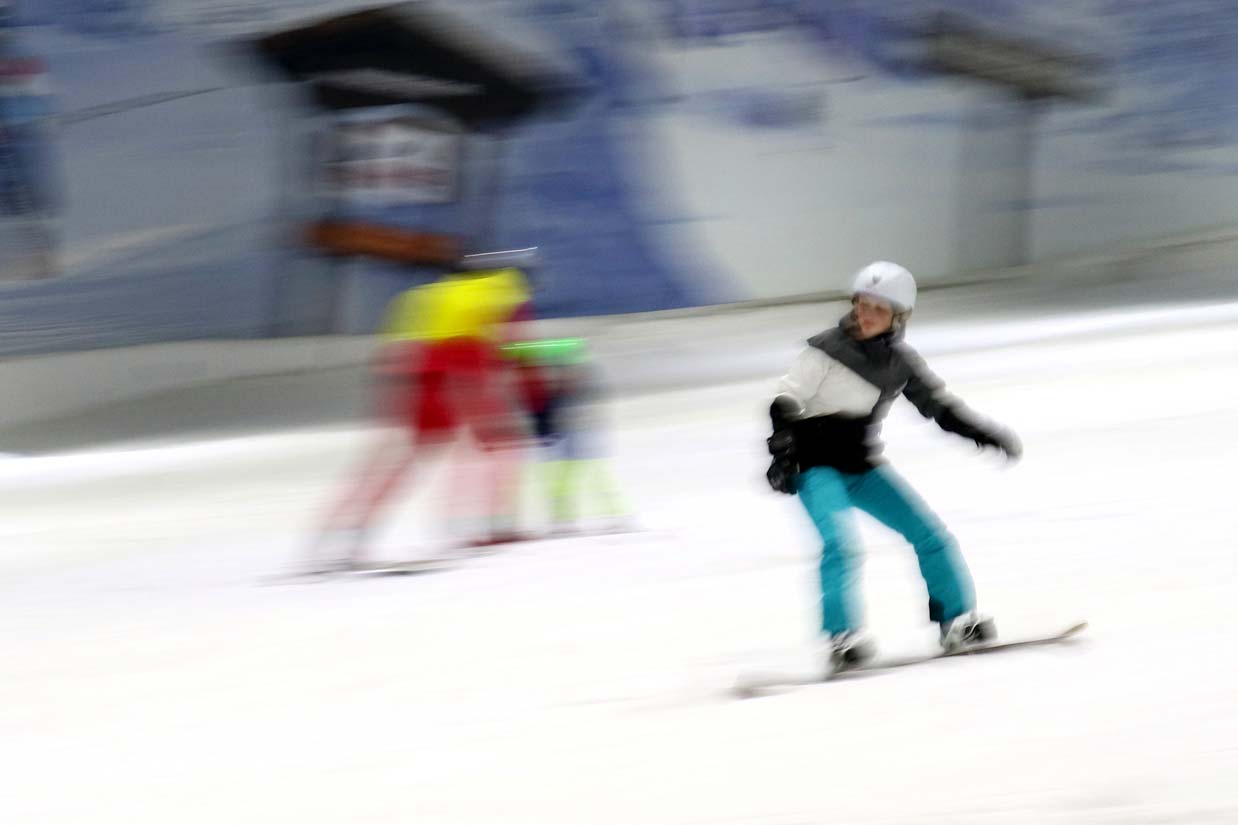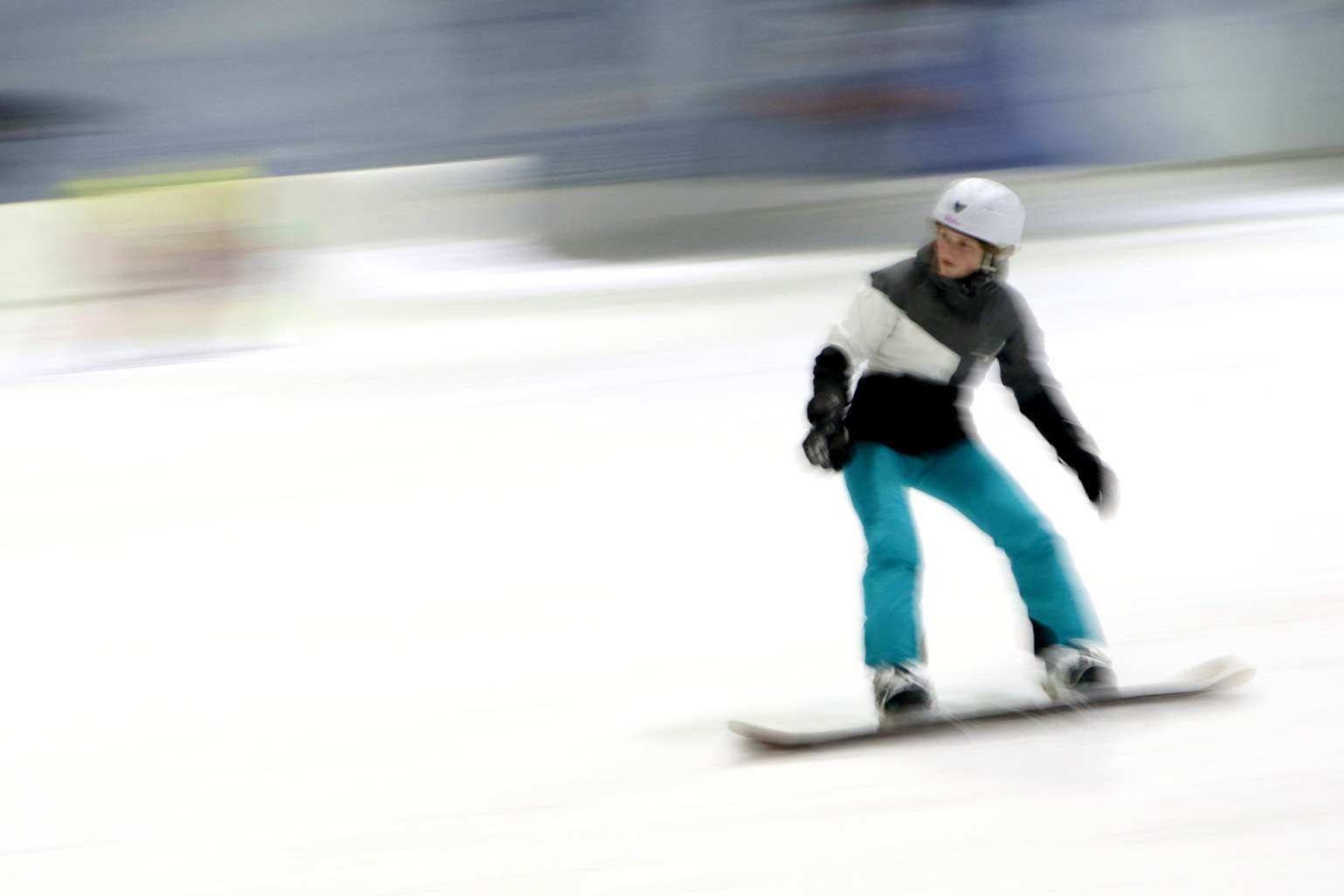|
Mike buys the building materials in the internet: steel edges, PE-sidewalls, base layer, glass fibre fabric – not any fabric, but the torsion proof type
with fibres in longitudinal, lateral and diagonal directions – epoxy resin, and hardener. They could also buy a wooden core if they wanted to, but decide to rather build one from leftover wood from various former
weekend projects. There are so many treasures waiting to be dug out in either the basement or the garage and then be reused: Beech from building the kitchen table, larch floorboards, maple from the cutting
board, spruce planks from the shelf construction, bangkirai boards from the patio, and Western red cedar from the canoe. These woods, decides Katharina, should be beautifully assembled to form the core and give
her snowboard an elegant multicolour wooden look. Mike agrees with her, although for a different reason. He always tries to avoid leftovers, no matter whether at lunch or when woodworking.
The actual woodworking starts with cutting the various leftover woods into 1 cm thin strips. For this task, and only for this task, Katharina lets Mike go ahead. Cutting the strips
is done on the table saw, and Katharina still vividly remembers the woodworker whom she asked for a placement in the 2 week internship program during 9th
grade. The guy only had four fingers on his left hand – a table saw accident. So it’s up to Mike to operate the table saw, but then Katharina takes over. After all, there’s still plenty of work for all the other tools. To start with, there are the C-clamps to glue the wooden strips to a 30 cm wide panel to form the wooden core. Then she uses the electric plane, the router on a sled and the orbital sander to work the panel down to the desired thicknesses. With a cordless drill and a forstner bit she drills the holes for the inserts that the bindings will eventually be attached to. The jigsaw is needed to make an auxiliary plywood form of the board around which she bends the steel edge. Then the laminating starts. Katharina mixes roughly a liter of epoxy with hardener and glues the two layers of glass fibre fabric and the base sheet to the core. After curing, it’s time again for jigsaw, router, and orbital sander to remove those parts of the wooden core that protrude beyond the steel edge. The two final tasks are then routine snowboard maintenance: sharpening the steel edges and waxing the base layer. As complicated as this may all seem, standing at the workbench and having the great goal of a most beautiful snowboard in front of your eyes, it is a feasible job. And in fact, Katharina now holds her very special home-made snowboard in her hands.
|
